
Expert Verified, Online, Free.

HOTSPOT -
Your network contains an Active Directory Domain Services (AD DS) domain named adatum.com. The domain contains a file server named Server1 and three users named User1, User2, and User3.
Server1 contains a shared folder named Share1 that has the following configurations: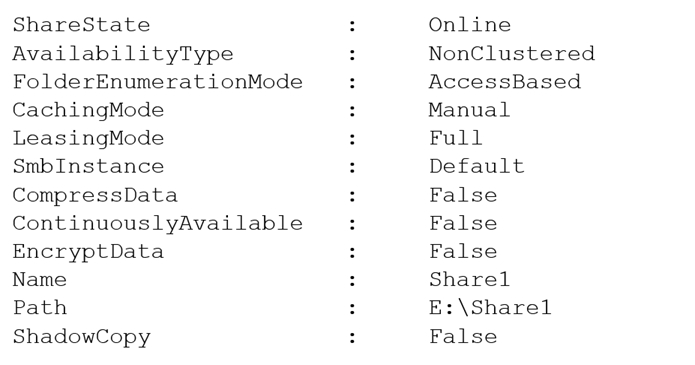
The share permissions for Share1 are configured as shown in the Share Permissions exhibit.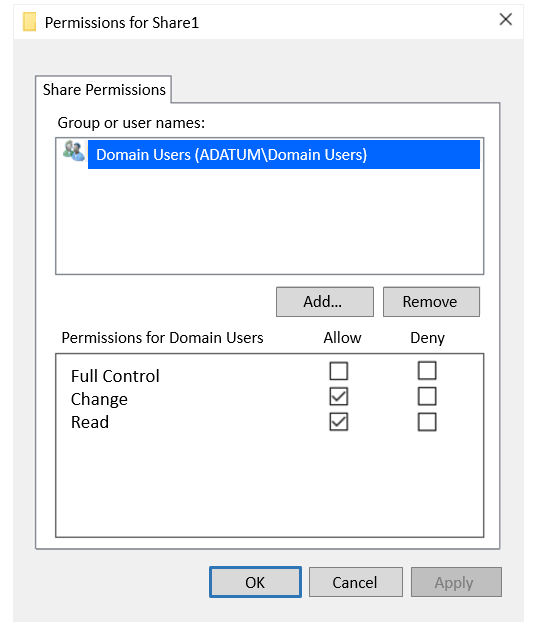
Share1 contains a file named File1.bxt. The advanced security settings for File1.txt are configured as shown in the File Permissions exhibit.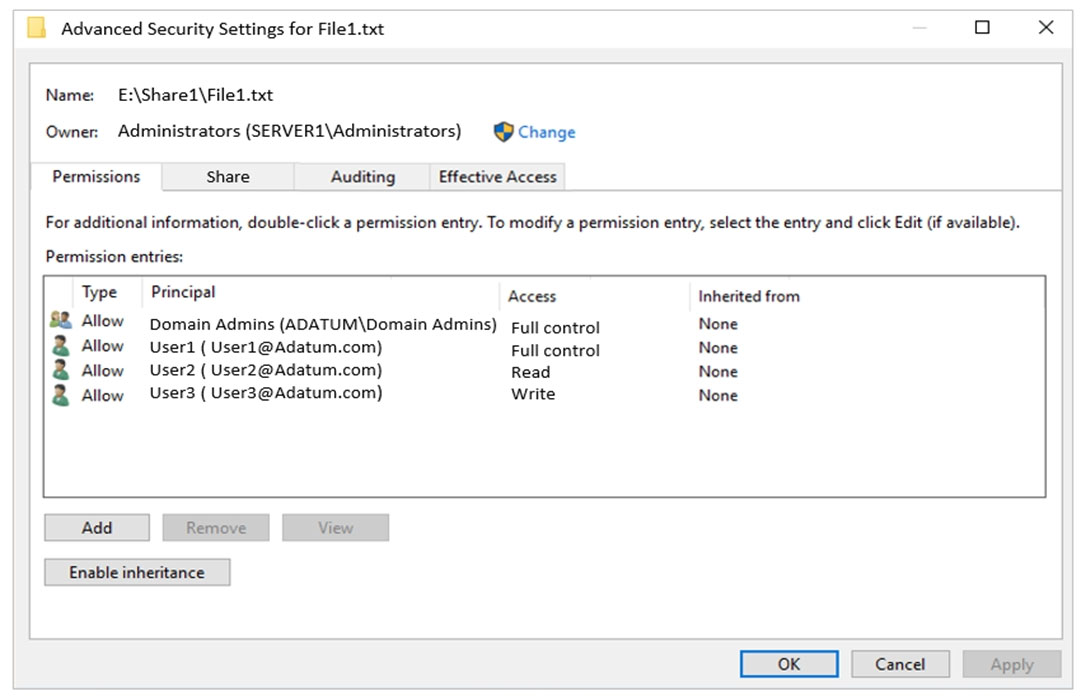
For each of the following statements, select Yes if the statement is true. Otherwise, select No.
NOTE: Each correct selection is worth one point.
Hot Area: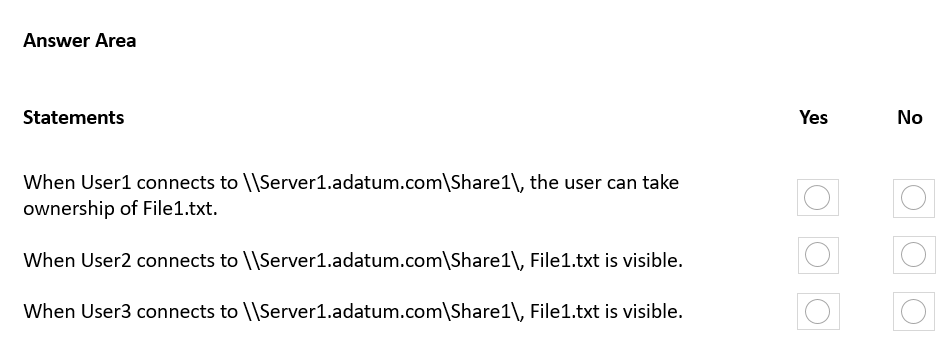
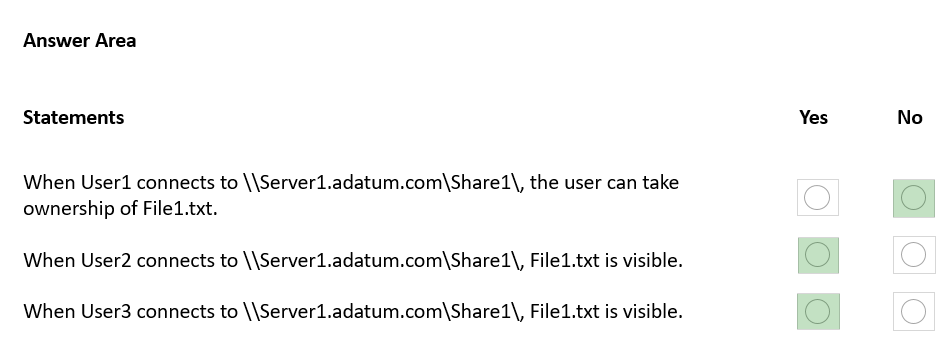
prepper666
Highly Voted 1 year, 10 months agolukiduc9625
1 year, 7 months agoLeocan
1 year, 5 months agoAvoKikinha
Highly Voted 1 year, 11 months agoknotcz
2 months agonazgul250
1 year, 11 months agoAnonymousJhb
1 year, 9 months agoEdshotMachine
1 year, 2 months agoKurko
1 year, 5 months agojecawi9630
1 year, 4 months agojecawi9630
1 year, 4 months agoRickySmith
Most Recent 3 months, 3 weeks agoboapaulo
4 months agoPayday123
5 months, 1 week agoPayday123
5 months, 1 week agoJackBauer
6 months, 2 weeks agoMR_Eliot
7 months agoknotcz
2 months agoTHEHob0
1 month, 3 weeks agoafridi43
7 months agoDoman01
8 months, 1 week agolouis04225
11 months, 2 weeks agoMiMojo
1 year agosyu31svc
1 year agosyu31svc
1 year agochadamantium
1 year, 2 months agophi3nix
11 months, 1 week agowredski
1 year, 3 months agojoehoesofat
1 year, 5 months agolukiduc9625
1 year, 7 months agoContactfornitish
1 year, 8 months ago